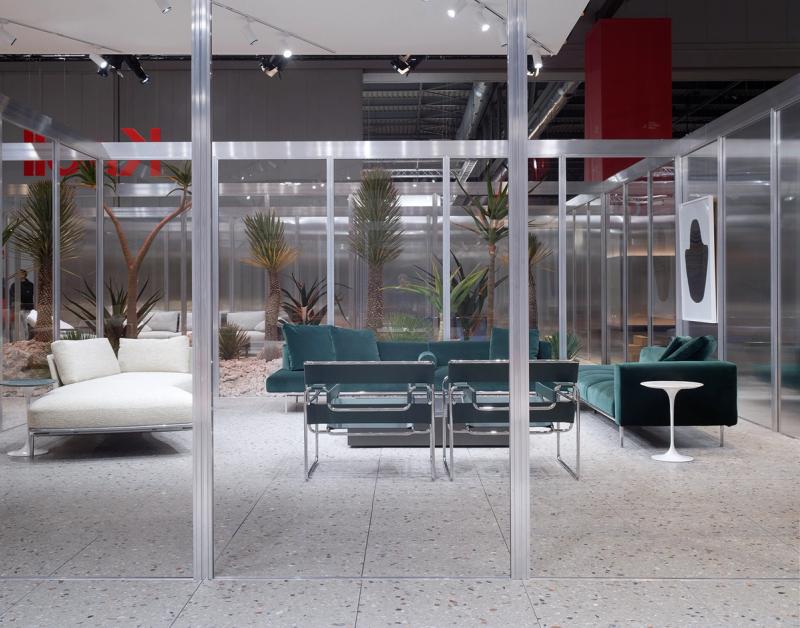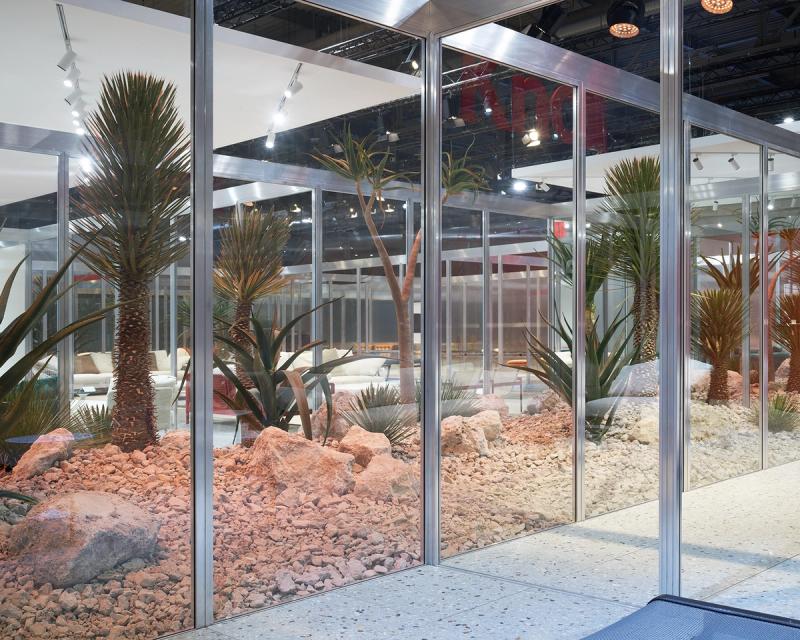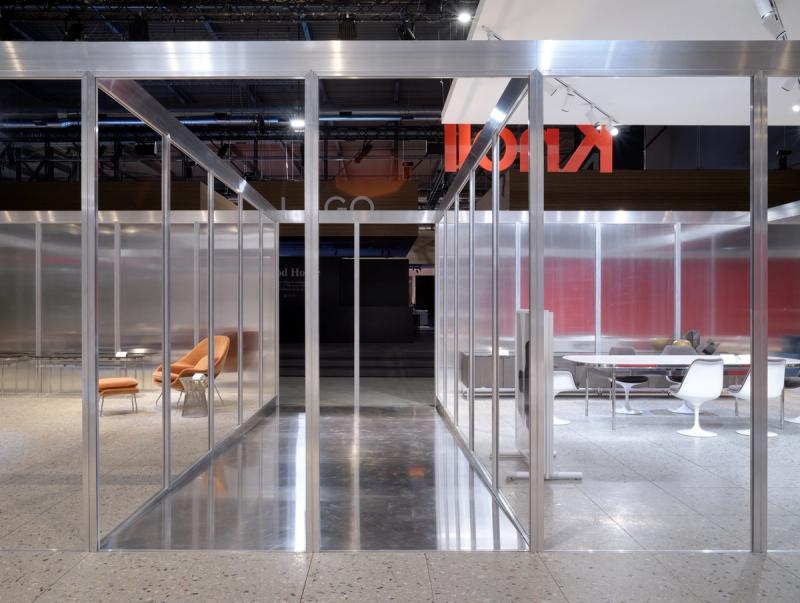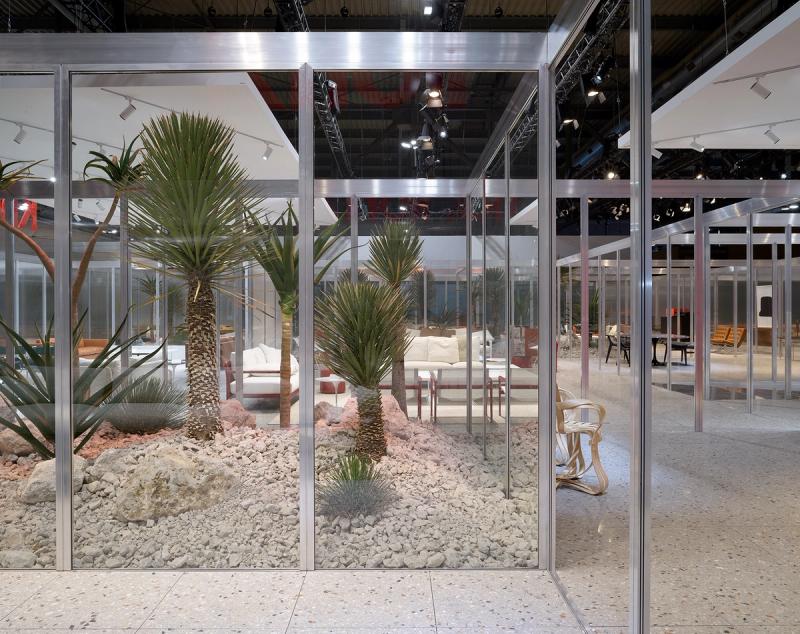
15 Standouts From Milan Design Week
Everywhere I went during this year’s Milan Design Week, there seemed to be a palpable feeling that the Salone del Mobile design and furniture fair, now in its 61st year, is sputtering, or, at the very least, puttering. While it unquestionably remains the world’s most important annual design event, it was evident that the winds are increasingly blowing toward the Fuori Salone, or “Outside Salone,” presentations and events around the city—particularly the buzzy independent design fair Alcova, which this year took place at a former slaughterhouse, and spaces in and around the city’s Brera neighborhood, long a Milan Design Week stronghold. Going forward, I expect more design brands, eschewing the notion of a “booth” and pursuing more experiential (and, let’s hope, more sustainable) approaches to presenting their wares, to take over atypical environments such as the Bagni Misteriosi, a pool from the 1930s where the Danish design brand GUBI presented its latest collections this year, or the Bonacossa Tennis Club, where the Milan-based designer Cristina Celestino created a pop-up restaurant with the food collective We Are Ona. Many architects, designers, and journalists I spoke with skipped the Rho fairgrounds altogether this year, preferring to stick to the city’s happenings. They, too, noted the fair’s growing sense of irrelevance, if in hushed tones.
Salone is quite literally losing ground: The 2023 edition of the fair was streamlined to be on one level instead of two at the 42-acre fairgrounds, a move that was promoted for sustainability reasons, but that also obviously stemmed from practical business matters. This year, there were 1,962 exhibitors, down from 2,418 in 2019. And though the fair was back to its regular April dates—following Covid closures that led to a mini edition in September 2021 and a decidedly slimmed-down iteration last June—the event was no return to business as usual. For many brands participating, there was a clear desire to return to a pre-Covid sense of “normal,” but across the five hours I walked the fairgrounds last week, it was evident that, emerging out of the pandemic, Salone, as with the world around it, has changed forever. Long beheld as the tentpole of Milan Design Week, Salone is still an impressive behemoth, with more than 300,000 attendees this year, but it no longer has the magnetic pull it once did.
Aside from a handful of standout booths—especially Knoll and Flos—there wasn’t much at Salone that surprised me or stopped me in my tracks. So many of the new designs presented there seemed derivative and staid, or even, in some cases, rushed. Given the timeframe between last June’s edition to this April’s, this wasn’t necessarily surprising. And while the fair did have some degree of curation, including an exhibition by the Swiss-French architectural photographer Hélène Binet and its Salone Satellite presentation of work by designers 35 and under, now in its 35th year and still overseen by the peerless Marva Griffin, it was largely lacking in terms of cultural depth.
I think now is a good time to question the need for an annual fair. While Salone is a vital industry organ and a key economic driver for the city of Milan, why does it need to take place every year? Why must brands build booths again and again, only to tear them down after a week, and too often fail to reuse, recycle, or upcycle their materials? Why not turn Salone into an every-other-year occasion, biennial-style, and tighten its curation and focus—make it an experience? Does simply producing more stuff actually equal more sales growth? I’m not convinced. As a (or even the) centerpiece of the industry, Salone has the power to shift global design conversations, highlight best practices, and even redefine the meaning and purpose of a fair. “Fewer, better things” should be its mantra. Practicing true sustainability would be to produce less, and without a reliance on virgin materials. The fair should be considering this as part of its business model and ethos.
In the manifesto for “Take It or Leave It,” the exhibition and lottery The Slowdown organized with Paola Navone in Milan’s Zona Tortona neighborhood this year (at which nearly 600 numbered objects collected or designed by Navone were given away across five days), we argued that designers will no longer serve the role they have throughout much of the 20th and early 21st centuries. “Designers will need to embrace regenerative resources and nonstandard materials,” the manifesto reads. “Upcycling, recycling, and reuse won’t just be should-dos; they’ll be musts.” The same, I believe, goes for Salone and other design fairs.
The American furniture company Knoll appears to have gotten the memo. Turning the notion of a fair booth on its head, it presented a refreshingly pragmatic model and way forward: a transportable pavilion made out of 50 percent recycled materials, designed by the Belgian architects Kersten Geers and David Van Severen. Built out of aluminum posts and beams, glass panels, and a recycled concrete terrazzo floor, it was the company’s first major effort under designer Jonathan Olivares, who joined Knoll as senior vice president last year. “It’s an architectural project,” he told me of the structure, which is more befitting of Palm Springs than any convention hall. “When I’ve run into my friends this week, I’ve said, ‘You have to come see the house.’ I haven’t said, ‘You have to come see the furniture’—or, god forbid, ‘the booth.’ That’s derogatory.” Noting that this year was his first time back at the fairgrounds in around a decade, he said, “Yes, there’s furniture here, but Knoll is not a furniture brand. It makes works that are in dialogue with architecture. ‘Furniture,’ at this point, is an overused word. These are works.”

Exiting Knoll, I realized that that was exactly what I was longing for at this year’s fair, and that was largely lacking: not furniture, but works, or what Anders Byriel, the CEO of the Danish textile company Kvadrat, recently described to me on our Time Sensitive podcast as designs with an “artistic edge.” At the booth of the Italian lighting brand Flos, there were new pieces from Konstantin Grcic, Ronan and Erwan Bouroullec, and Philippe Malouin that embodied this sensibility. With its retro-style design, based on vintage cars, and magnetic ball joint, Malouin’s Bilboquet adjustable table lamp especially stood out. The world may not need another lamp, but Bilboquet makes a strong case for adding at least just one more. The rest of the fair mostly felt conventional, snoozy, and status-quo. Visiting Knoll and Flos made it worth the trip.
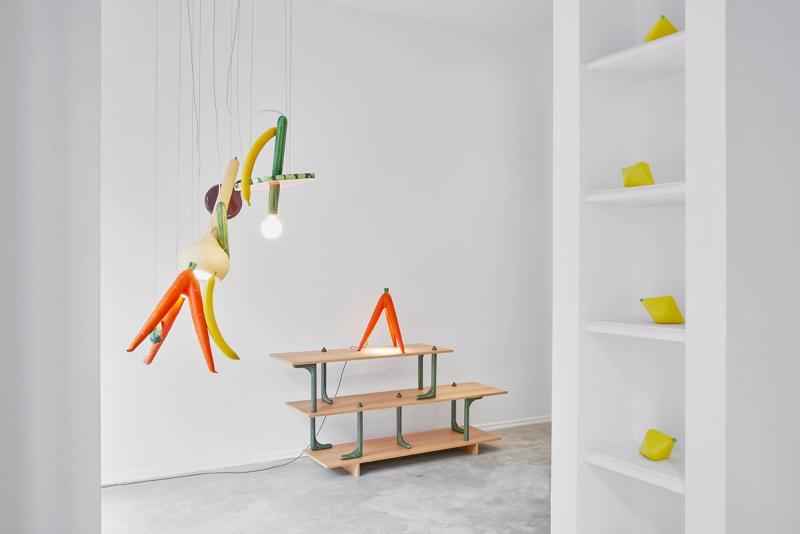
Around the city, a few moments of joy and wonder took hold, and not just at “Take It or Leave It,” where the lottery participants came and went with beaming smiles. At a pop-up space on Via Zenale, Carwan Gallery presented Paris-based designer Robert Stadler’s whimsical OMG-GMO series of ceramic hand-painted objects and furniture from the Italian company Bitossi, several of which first debuted last year at Philip Johnson’s Glass House in New Canaan, Connecticut (where I spent a most perfect afternoon with Stadler as he finished installing the show). The pieces, which humorously nod to both emoji culture and the absurdity of modern-day farming practices, include shelves supported by L-shaped zucchinis, a tripod lamp comprising three oversized interconnecting carrots, and a glass-topped coffee table supported by eggplant wheels. Not just a cheeky exercise, OMG-GMO was two years in the making and rigorously executed. As with all of Stadler’s work, it’s shrewdly rooted in art history and design references.
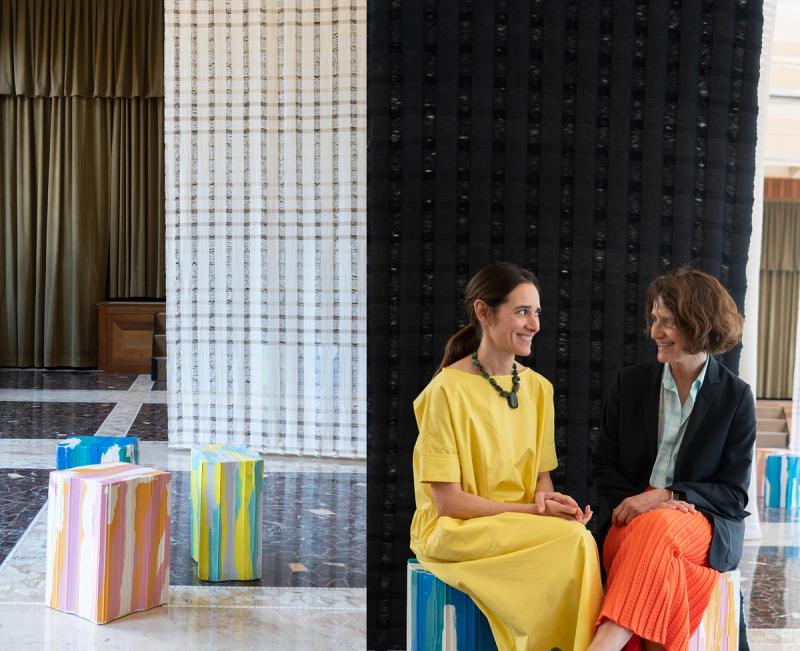
Inside the Istituto Marcelline Tommaseo, a school and nunnery near the Triennale Design Museum, the design venture AMO—newly formed by Ambra Medda, a founder of Design Miami, and Veronica Sommaruga, a textile expert who has worked with the likes of Calvin Klein and Hermès—presented its debut project, Teatro Albers, in collaboration with the Josef & Anni Albers Foundation. There, Medda and Sommaruga curated a selection of works by designer Marco Compardo and master weaver Laura de Cesare that reference the Alberses’ approaches to seeing and making (Compardo, who created a series of resin benches, looked to Josef’s 1963 book Interaction of Color; de Cesare reinterpreted Anni’s textile techniques). On Sunday evening, at a dinner inside the school (which Medda and Sommaruga both attended in their youth)—during which several of the nuns were present—Nicholas Fox Weber, the Albers Foundation’s longtime director, said that the project was, as with the Alberses’ work, “about experimentation, understanding the process, not imitation,” practically summing up the spirit of what has, I believe, long made Milan Design Week a potent moment for presenting innovation, experimentation, and craft. Through its subtle installation in a special setting, Teatro Albers was Milan Design Week at its best: thoughtful, contextual, beautiful, rigorous, forward-looking, exquisitely-presented, craft-oriented.

Elsewhere, the prankster artist-designer couple Laura Baldassari and Alberto Biagetti of Atelier Biagetti—with their wry work, sometimes it’s hard to tell exactly what the joke is, or if it’s even a joke in the first place—presented “The King,” an Elvis Presley–themed exhibition. The centerpiece was a massive deep-red seating concept that Biagetti told me is intended to turn your living room into a stage. Casually sitting on the sofa in a white leather sequin outfit, in Marina Abramović–style performance mode, was Baldassari, who sang an opera rendition of Presley’s 1961 hit song “Can’t Help Falling in Love.” (In addition to being an artist and designer, she is a trained opera singer.) On the walls were paintings she had made that subtly and satirically reference Graceland. In an industry that far too often takes itself too seriously, Baldassari and Biagetti always inject some humor (past projects have delved into bodybuilding, sex, money, and cats), and this year, perhaps their campiest act yet, was no exception.

Other highlights of the week for me included Kvadrat, which debuted fabrics by the French designer Ronan Bouroullec that translated several of his drawings into textile form; the Spanish luxury house Loewe, which at the 16th-century Palazzo Isimbardi showcased a playful collection of chairs reimagined by artisans who adorned them with materials such as metallic foils and leather; Lexus, which presented a mobile installation of Noguchi-esque forms from architect Suchi Reddy (alongside work by the winners of the 2023 Lexus Design Award, now in its tenth year); and Google, which under the direction of its visionary vice president of hardware design, the neuroaesthetics expert Ivy Ross, presented “Shaped by Water,” an exhibition conceived with Los Angeles–based artist Lachlan Turczan and emphasizing a subject near and dear to Ross’s heart: vibration.
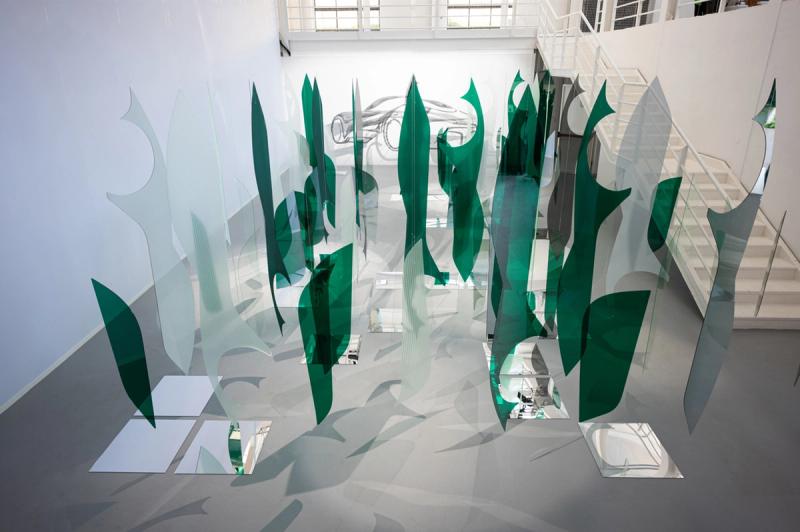
If ever there were a metaphor for what Salone del Mobile and Milan Design Week need a bit more of, vibration is exactly it. The echoes that reverberate out from the fair literally shape the world, and have done so for more than half a century. I wasn’t feeling a whole lot of vibration this year. At least there were a few bright spots.
